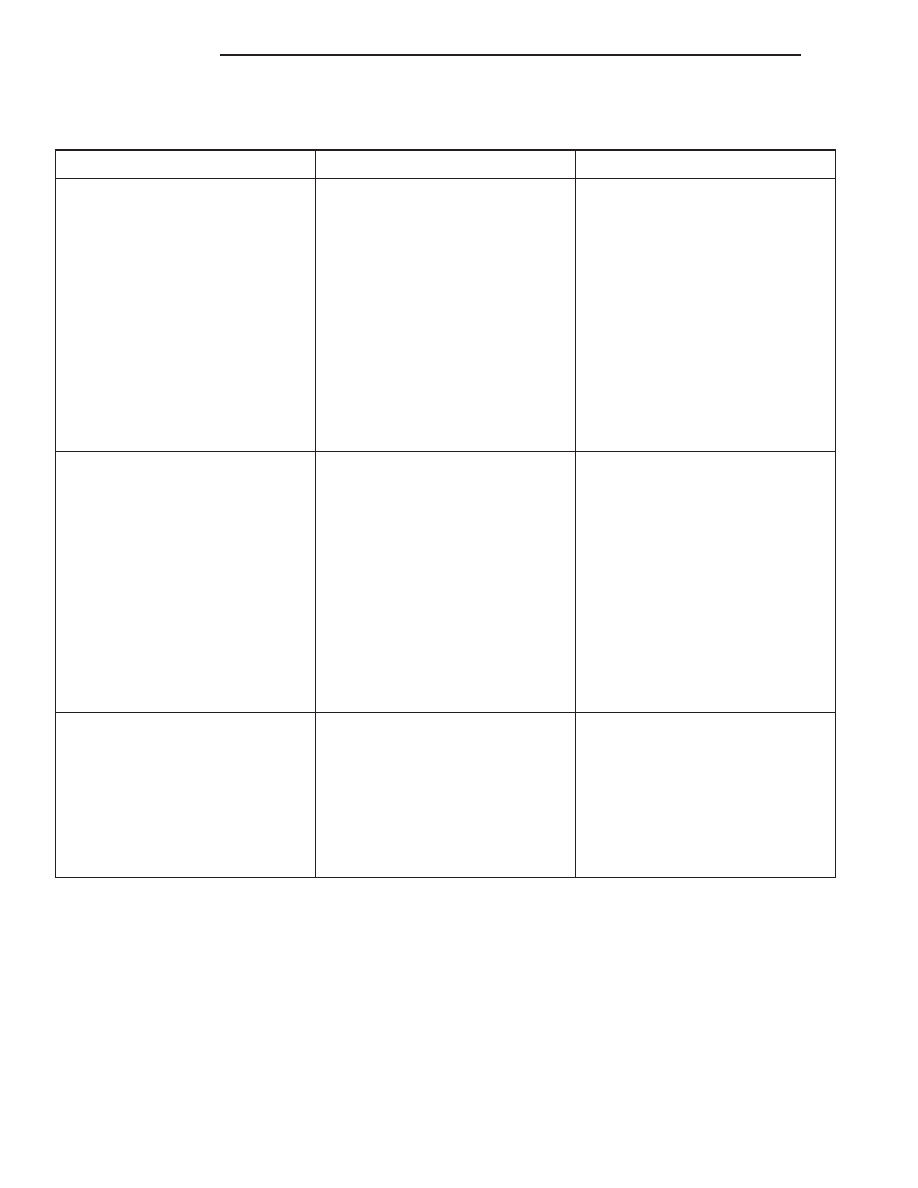Dodge Dakota (R1). Manual - part 455

DIAGNOSIS AND TESTING—ENGINE DIAGNOSIS - LUBRICATION
CONDITION
POSSIBLE CAUSES
CORRECTION
OIL LEAKS
1. Gaskets and O-Rings.
1.
(a) Misaligned or damaged.
(a) Replace as necessary.
(b) Loose fasteners, broken or
porous metal parts.
(b) Tighten fasteners, Repair or
replace metal parts.
2. Crankshaft rear seal
2. Replace as necessary.
3. Crankshaft seal flange.
Scratched, nicked or grooved.
3. Polish or replace crankshaft.
4. Oil pan flange cracked.
4. Replace oil pan.
5. Timing chain cover seal,
damaged or misaligned.
5. Replace seal.
6. Scratched or damaged vibration
damper hub.
6. Polish or replace damper.
OIL PRESSURE DROP
1. Low oil level.
1. Check and correct oil level.
2. Faulty oil pressure sending unit.
2. Replace sending unit.
3. Low oil pressure.
3. Check pump and bearing
clearance.
4. Clogged oil filter.
4. Replace oil filter.
5. Worn oil pump.
5. Replace as necessary.
6. Thin or diluted oil.
6. Change oil and filter.
7. Excessive bearing clearance.
7. Replace as necessary.
8. Oil pump relief valve stuck.
8. Clean or replace relief valve.
9. Oil pump suction tube loose or
damaged.
9. Replace as necessary.
OIL PUMPING AT RINGS; SPARK
PLUGS FOULING
1. Worn or damaged rings.
1. Hone cylinder bores and replace
rings.
2. Carbon in oil ring slots.
2. Replace rings.
3. Incorrect ring size installed.
3. Replace rings.
4. Worn valve guides.
4. Ream guides and replace valves.
5. Leaking intake gasket.
5. Replace intake gaskets.
6. Leaking valve guide seals.
6. Replace valve guide seals.
DIAGNOSIS AND TESTING—CYLINDER
COMPRESSION PRESSURE
The results of a cylinder compression pressure test
can be utilized to diagnose several engine malfunc-
tions.
Ensure the battery is completely charged and the
engine starter motor is in good operating condition.
Otherwise, the indicated compression pressures may
not be valid for diagnosis purposes.
(1) Clean the spark plug recesses with compressed
air.
(2) Remove the spark plugs (Refer to 8 - ELEC-
TRICAL/IGNITION
CONTROL/SPARK
PLUG
-
REMOVAL).
(3) Secure the throttle in the wide-open position.
(4) Disconnect the ignition coil.
(5) Insert a compression pressure gauge and rotate
the engine with the engine starter motor for three
revolutions.
(6) Record the compression pressure on the third
revolution. Continue the test for the remaining cylin-
ders.
9 - 8
ENGINE 2.5L
AN
ENGINE 2.5L (Continued)